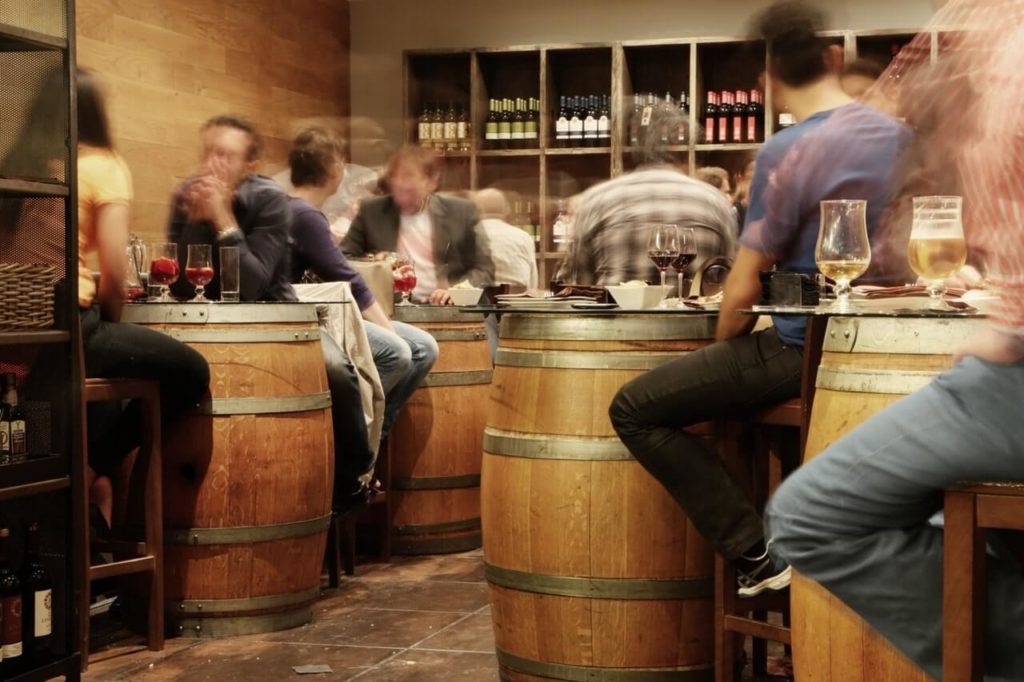Five bad practices to avoid and five best practices that will make your tills sing
|
As bars & restaurants begin to reopen all at once post COVID-19, many owners and managers should ask what they can do to make themselves stand out. We’ve compiled some approaches to consider when attracting the right crowd to your business. Here are five bad practices to avoid and five best practices that will make your tills sing. |
Picture yourself as a regular customer of your establishment. Not necessarily a real one, but your ideal customer. Your target demographic. And the kind of person that influences members of a larger peer group or community. In marketing jargon, a reference customer. View the world through their eyes. Share their tastes and their outlook on life.
Now complete the following sentence:
”I eat/drink at [insert name of your establishment] because …”
Every owner or manager should be able to answer this question. What is the main attraction of your establishment? What makes it different? What is its unique selling proposition?
You will only find answers by getting into the collective head of that key consumer demographic. Find out what they really appreciate, work out how you can deliver on their wishes, and then do it really, really well.
The answer to this question might be simpler than you think.
If your target customer has simple tastes, it might be “I always go to [insert name of your establishment] because they do the best steak and chips in town”.
If your target customer is a family with young kids, focus on being kid-friendly, even if that means driving away hip singles.
One of the reasons why franchisees are more likely to succeed than new independent outlets is that the franchising companies know their target demographic (or market segment) down to the last detail. They have huge amounts of data that helps them understand and anticipate what needs to stay constant in their offer, and how customer needs might change over time or according to location.
But if you are an independent with just one or a few outlets, it is still possible to outsmart them if you avoid the pitfalls.
A common mistake of independents is to introduce a new and “creative” concept based on an idea that has little resonance with the public. Gimmicky restaurants launch like a rocket but come down with a bump. Maybe they do something really well, but it is not something that people really want; it’s an idea that cannot go the distance. People will try you out, but you’re not giving them a reason to come back.
So, what separates the fad concept from one that has staying power? Here are five bad and five best practices:
The Bad
All of the following approaches can create a good bar or restaurant, but not a great one. They don’t have the “I eat and drink at … because …” factor.
1. Coming too late to the market.
If you’re thinking of rebranding the pub you just acquired a “gastropub”, think again. Originally, the concept had true meaning, but the bandwagon passed by years ago. Now it communicates that you think you are a cut above the average pub but can’t say why. People no longer say, “I go to the Thirsty Duck because they started calling the Sunday roast Chateaubriand”.
2. Adding a vague “twist” to a concept in an already saturated market.
Launched in 2011, Pie Five, an American pizza chain, peaked at 100 outlets and has been in decline ever since. It claimed to use fresher ingredients in its pizzas than their competitors while cooking them in just five minutes. But this is a mixed message and in a country that already has its fill of pizzerias, nobody says, “I eat at Pie Five because it’s both fast and fancy”.
3. Being pretentious.
The clue is usually in the name. It shouts out “look at me, I’m fancy”. Hint: people rarely say, “I eat at Chez André because … I love the name”. Start-up bars and restaurants that invest too much money in quirky design tend to neglect the things people really appreciate, like good food, tasty cocktails, comfort, and efficient but unobtrusive service.
4. Focus on too narrow a clientele.
It is easy to confuse a demographic (e.g. 20 to 35-year-olds) with a transient generation (e.g. millennials) or style (e.g. hipsters). If you are not careful, the trendy in-crowd that is the mainstay of your business will drive away others. Plus, they age. Of course, some people will indeed say “I go for a drink at Zigfried von Underbelly” because everybody looks identical to me – but only in Shoreditch.
5. Technology and other gimmicks that nobody ever asked for.
People will not say “I go to Ex Macchina because your espresso is served by a robot”. Technology that makes your business more efficient is great, but the hospitality business is about, er, offering hospitality.
The Best
Look through annual listings such as The World’s 50 Best Bars. The same names appear year after year. They may not be your direct competitors, but you can learn from all of them. There are no “secrets” to their success, because they are that confident.
1. Charismatic leadership.
The American Bar at the Savoy has built its reputation on its cocktails, and more lately on an enduring theme based on Terry O’Neill’s celebrity photographs. But the real stars are the stewards who have themselves achieved celebrity status. The most famous of all, Peter Dorelli, was renowned for introducing guests to each other. Nobody needs to feel lonely. A fantastic reason to visit.
2. Décor that ages gracefully.
You need a lot of start-up capital to be successful, but most importantly, you need to invest it wisely. For example, in furnishings that look good when they are first installed, but will look even better in five, ten, twenty years. Take the Manhattan in Singapore, which “oozes chic from every fold in its glorious soft furnishings and Chesterfield armchairs”. People come here because the décor creates a great ambience, quite simply, every visit is a treat.
3. Style that never goes out of fashion.
Take, for example, Bar Termini in Soho. A visit to the website tells you all you need to know: classic but understated Italian style. The menu is limited, but everything on it – food and drinks – is done to perfection.
4. Depth (as opposed to breadth).
Think of it this way: you are giving a sufficiently large demographic not just one reason to keep coming back, but many. As it says in the 2018 review, “few bars are as meticulously thought through as The Dead Rabbit” in New York. Owners Sean Muldoon and Jack McGarry have cracked it. Traditional Irish but for the 21st century, with virtuoso cocktails, good food, great staff, the list goes on.
5. A concept that truly fills a gap in the market.
Proof that you don’t have to be in the Top 50 to have a major hit. When Iain Russell, a lifelong beer-lover, accidentally landed in Denmark, he could not find a drop of English real ale anywhere. So, he invested his inheritance in Charlie’s Bar, Copenhagen, and then in The Wharf, Aalborg. He runs both like a sergeant major and plays the classic brusque landlord, but both staff and customers love him! The two establishments offer an enormous range of cask and keg beers. And no matter how much the big Danish brewers offer to buy them out, they are still proudly independent.









